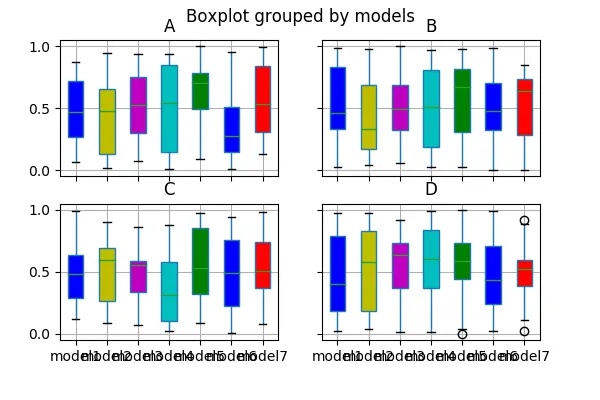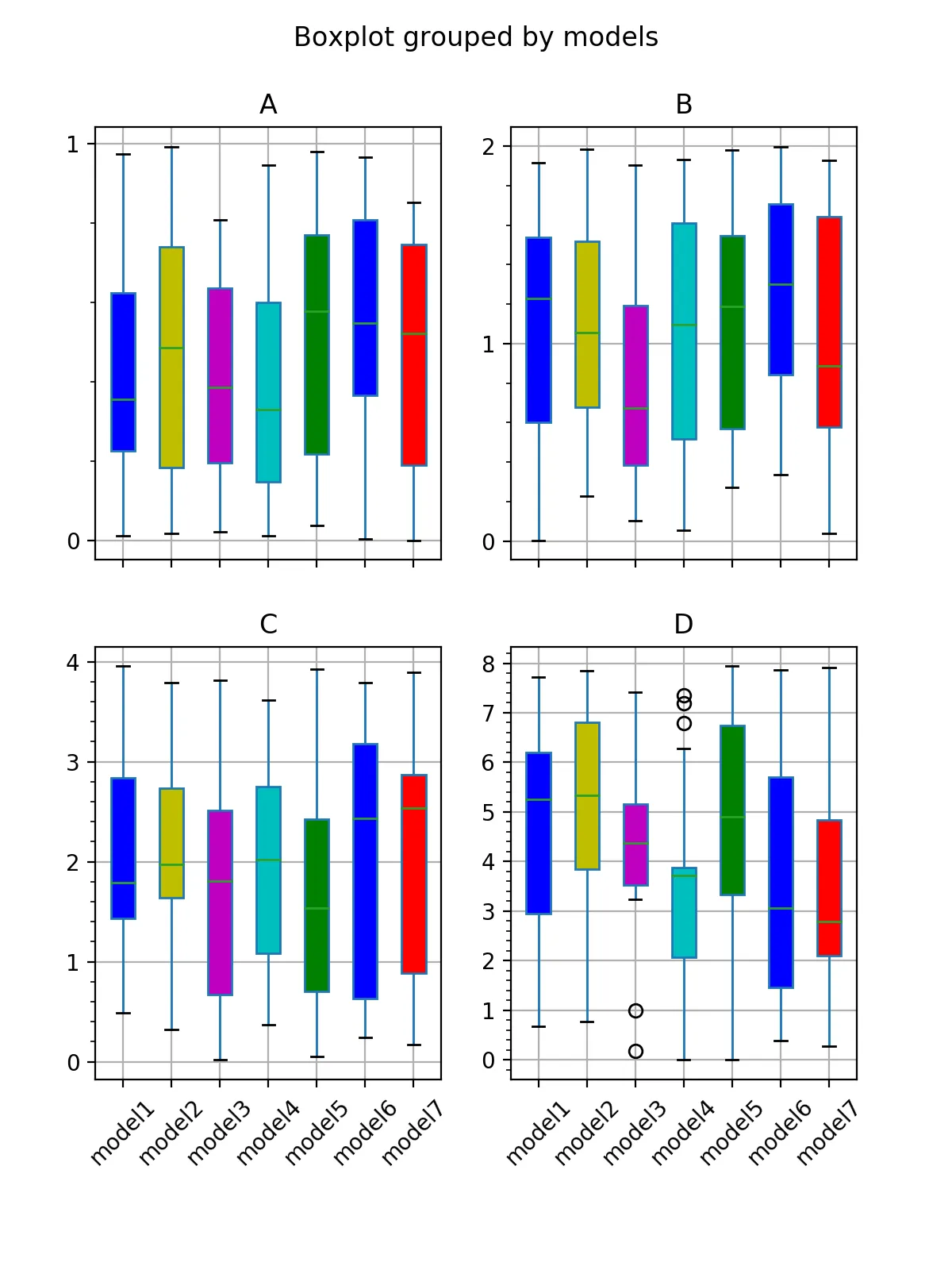以下代码可帮助获得具有独特彩色框的子图。但是所有子图共享一个公共的x和y轴。我希望每个子图都有独立的坐标轴:
这里是上述代码的输出: 我试图在每个子图中使用独立的 x 和 y 轴…
我试图在每个子图中使用独立的 x 和 y 轴…
import pandas as pd
import numpy as np
import matplotlib.pyplot as plt
from matplotlib.patches import PathPatch
df = pd.DataFrame(np.random.rand(140, 4), columns=['A', 'B', 'C', 'D'])
df['models'] = pd.Series(np.repeat(['model1','model2', 'model3', 'model4', 'model5', 'model6', 'model7'], 20))
bp_dict = df.boxplot(
by="models",layout=(2,2),figsize=(6,4),
return_type='both',
patch_artist = True,
)
colors = ['b', 'y', 'm', 'c', 'g', 'b', 'r', 'k', ]
for row_key, (ax,row) in bp_dict.iteritems():
ax.set_xlabel('')
for i,box in enumerate(row['boxes']):
box.set_facecolor(colors[i])
plt.show()
这里是上述代码的输出:
 我试图在每个子图中使用独立的 x 和 y 轴…
我试图在每个子图中使用独立的 x 和 y 轴…
